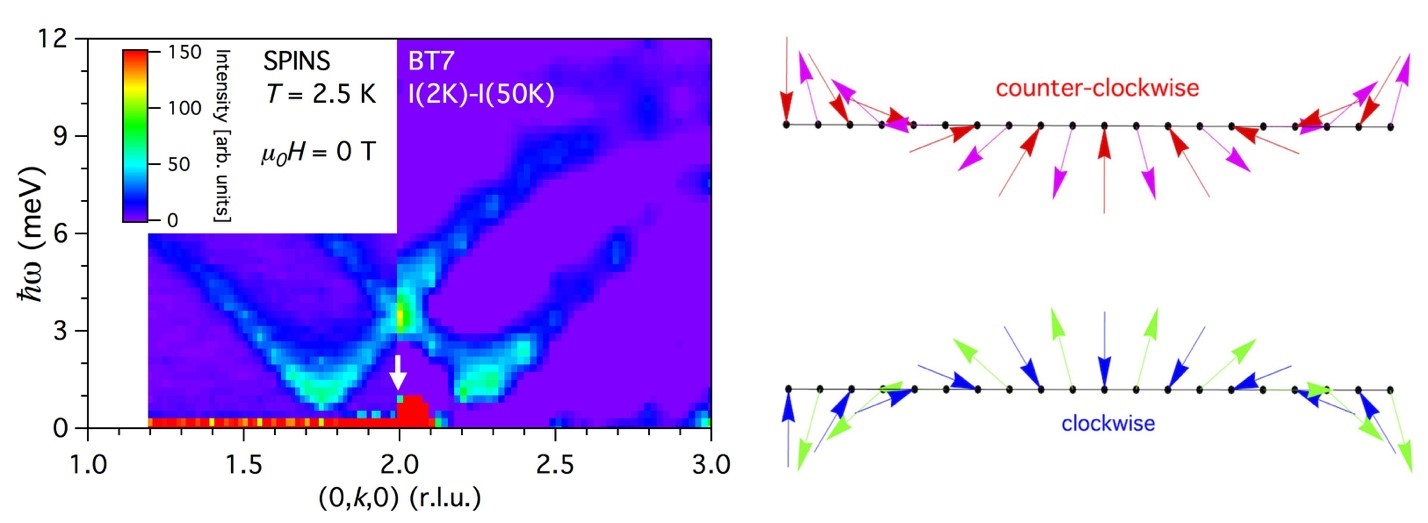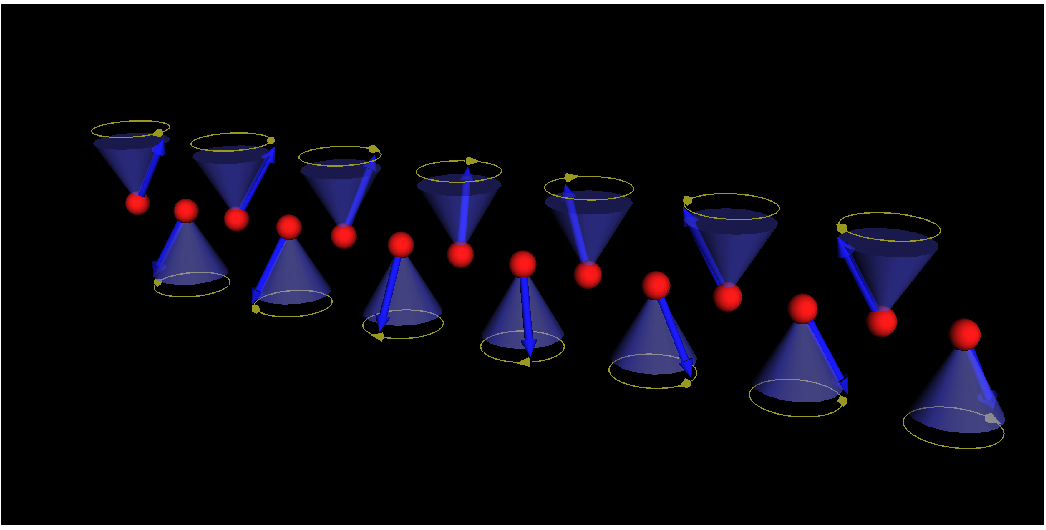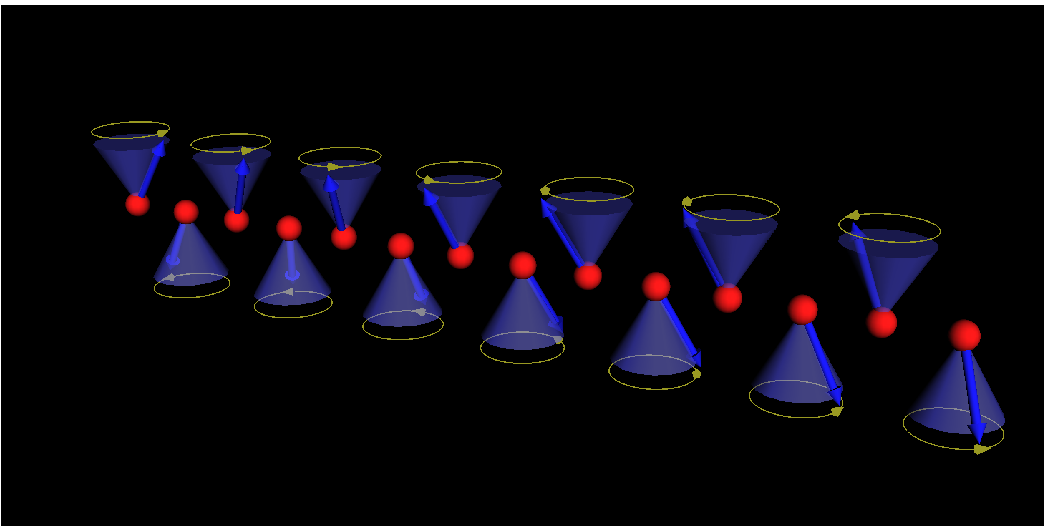

written by Thaned Pruttivarasin, Kittiwit Matan, and Taku J Sato
An international team of researchers based in Thailand, USA, and Japan, has conducted a thorough study of an exotic behavior of material called "noncentrosymmetric antiferromagnet." The team reports its finding [1], which shows, for the first time, direct evidences of the nonreciprocal magnons by monitoring the behavior of the propagation of spin waves in magnetic material.
We are used to a "circular birefringence" effect, where photons travelling inside a certain kind of crystal have different speed depending on their circular polarization. In other words, left-handed photons might travel faster that right-handed photons. This effect leads to the so-called Faraday effect, where light polarization rotates as it propagates along the crystal. There have been tremendous applications of this effect in modern optical and photonic technology.
Other systems also exhibit behaviors that resemble the Faraday effect. In an ordered magnetic material, a spin excitation can also propagate along the crystal. This excitation is called a "magnon." Similar to the polarization states of photons, magnons in an antiferromagnet also have two distinctive states: left-circular and right-circular state. In most magnetic material, these two states have the same energy and therefore indistinguishable. However, in a certain type of magnetic material, these two states of magnons behave differently due to a lack of spatial inversion symmetry in the crystal structure. This phenomenon, called nonreciprocal magnons, has been predicted by Hayami et al. [2] However, there has been no direct observation of these nonreciprocal magnons until this work.
The researcher team perform a neutron scattering of α-Cu2V22O7 crystal and shows clear evidences of different energy-momentum dispersion relations between the left-circular and right-circular of magnon propagation. The experimental data is confirmed by linear spin-wave calculations. This work opens up a new regime of magnetic material which might find applications in magnon-based electronics (magnonics) such as the spin-wave field-effect transistor [3].



[1] G. Gitgeatpong, Y. Zhao, P. Piyawongwatthana, Y. Qiu, L. W. Harriger, N. P. Butch, T. J. Sato, and K. Matan, Physical Review Letters 119, 047201 (2017.) [link] [arXiv:1702.04889]
[2] S. Hayami, H. Kusunose, and Y. Motome, J. Phys. Soc. Jpn. 85, 053705 (2016).
[3] R. Cheng, M. W. Daniels, J.-G. Zhu, and D. Xiao, Sci. Rep. 6, 24223 (2016).
Related work
"Magnetic structure and spin dynamics of the quasi-two-dimensional antiferromagnet Zn-doped copper pyrovanadate," G. Gitgeatpong, Y. Zhao, J. A. Fernandez-Baca, T. Hong, T. J. Sato, P. Piyawongwatthana, K. Nawa, P. Saeaun, and K. Matan, Physical Review B, 106, 214438 (2022) [link][arXiv:2207.04618]
"Formation of single polar domain in α-Cu2V2O7," P. Piyawongwatthana, D. Okuyama, K. Nawa, K. Matan, T.J. Sato, J. Phys. Soc. Jpn. , 90(2), 025003 (2021) [link]
"Nonreciprocal magnons in noncentrosymmetric magnets," T. J. Sato and K. Matan, J. Phys. Soc. Jpn. 88, 081007 (2019) [link]
“Spin Seebeck effect in the polar antiferromagnet α-Cu2V2O7,” Y. Shiomi, R. Takashima, D. Okuyama, G. Gitgeatpong, P. Piyawongwatthana, K. Matan, T. J. Sato, and E. Saitoh, Physical Review B 96, 180414(R) (2017). [link] [arXiv:1709.06330]
“High-field magnetization and magnetic phase diagram of α-Cu2V2O7,” G . Gitgeatpong, M. Suewattana, A. Miyake, M. Tokunaga, P. Chanlert, N. Kurita, H. Tanaka, T. J. Sato, and K. Matan, Physical Review B 95, 245119 (2017). [link] [arXiv:1702.00703]
“Magnetic structure and Dzyaloshinskii-Moriya interaction in the S=1/2 helical-honeycomb antiferromagnet α−Cu2V2O7,” G. Gitgeatpong, Y. Zhao, M. Avdeev, R. O. Piltz, T. J. Sato, and K. Matan, Physical Review B 92, 024423 (2015). [link] [arXiv:1502.02769]